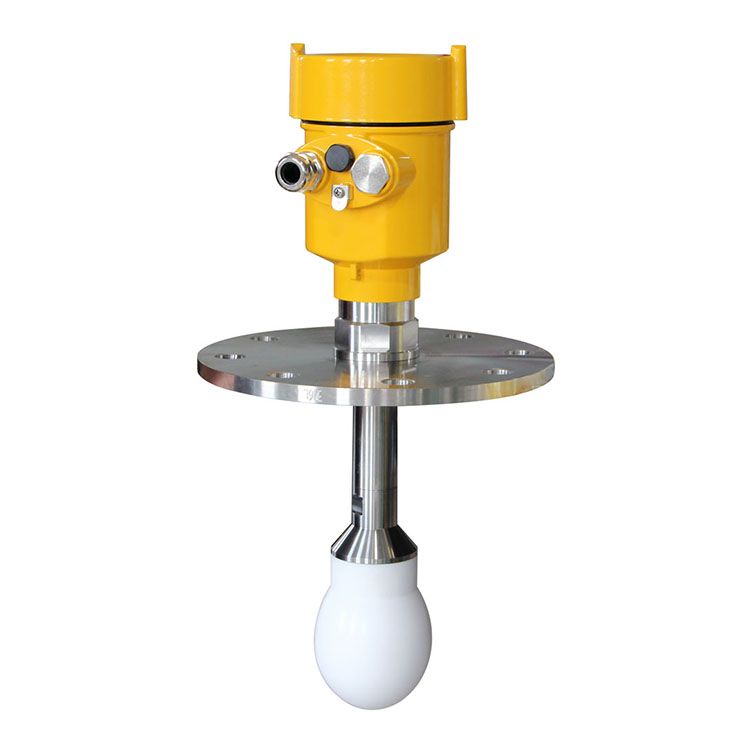In the past articles, we have also introduced to ourselves the relevant content of radar level gauges, and today we will focus on introducing the rationale and applications of various radar level gauges. Definition and classification of radar level gauges As a common level instrument product, radar level gauges are often used to measure the level of liquids, slurries and particles in various metal, non-metallic containers or pipelines. Radar level gauges are classified according to their working methods. Radar level gauges can be divided into two types: contact type and non-contact type. Compared with the contact radar level calculation meter, the non-structural contact radar level meter is the fastest growing measuring instrument in recent years. It has simple installation, simple maintenance, simple operation, and is not affected by dust, temperature and other components in the warehouse. advantage. According to the microwave waveform, non-contact radar level gauges can be divided into pulse radar level gauges and frequency modulated continuous wave radar level gauges. Non-contact radar level gauges and contact radar level gauges mainly include guided wave radar level gauges. Here are some common radar level gauges to talk about their principles and development.Reasons of several common radar level gauges1. Guided wave radar level gauge Guided wave radar retracts high-frequency microwave pulses and transmits them along the detection component (steel cable or steel pipe). When it touches the measured medium, because the dielectric constant gradually changes, it will cause emission, and then some pulse energy Be reflected back. The time isolation distance between the transmitted pulse and the reflected pulse is inversely proportional to the isolation distance of the measured medium. The actual level value can be calculated by the time of transmitting and taking over the pulse recorded by the radar level meter.2. Pulse radar level gauge Pulse radar level gauge emits microwave pulses, which are transmitted at the speed of light (in the atmosphere). After hitting the inner core of the measured medium (the dielectric constant must be greater than the dielectric constant of the transmitting medium), the department The microwave is reflected back and left (the amount of reflection depends on the flatness of the material surface/dielectric constant), and is taken over by the same antenna. The greater the reflection (rate) of the medium, the stronger the signal and the better the measurement; the amount of reflection ( The smaller the signal rate, the weaker the signal and the more complicated and troubled. By roughly identifying the isolation distance Δt between the transmitted pulse and the takeover pulse, the isolation distance between the antenna and the measured medium can be calculated in one step. Pulse radar rationale diagram3. FM continuous wave radar level meter FMCW radar uses 24GHZ as the measurement base frequency (carrier frequency), 2GHZ is the modulation bandwidth, and the partial scanning time is seven ms. It realizes 1 linear scanning. After the signal is transmitted, it will be fixed. After the time delay, it takes over to the echo signal. The time difference generated in the linear frequency sweep is inversely proportional to the isolation distance of the liquid level. Because there are a lot of reflected waves, the local echo time is suppressed from the fast Fourier (FFT) change, and the time signal is converted into a frequency spectrum with a constant energy. , The relatively high and relatively steep video spectrum signal is the effective signal. FM continuation wave radar level meter reason diagram. Several common radar level meters dominate. Because radar level meters have the advantages of accurate measurement, strong command, high reliability, long-winded, wide practical fields, etc., their dominance fields are very widespread. It can be said that it covers the industries of electric power, steel, metallurgy, cement, kerosene chemical industry, papermaking, food and so on. Radar level gauges are actually used in occasions where dust, temperature, and pressure change greatly, and there are inert gases and steam. However, because of the different rationale for the dominance of different radar level meters, the dominance conditions they operate are also very different. The specific hints are as follows:1. Pulse radar level gauges can generally dominate in most areas where they dominate. They are prominently used for level measurement of the medium in cylindrical tanks within 35 meters.2. For liquid storage tanks that can be equipped with a mixing function for spherical tanks, the guided wave radar level gauge can be used to control the liquid level measurement. Spherical tank
3. When measuring the medium of a container or storage tank with a small range and large dust, the FM continuous wave radar level meter with high energy and strong anti-disturbing skills must be operated, otherwise the antecedent of the measurement may not be rough enough.

Post time: 21-09-21
